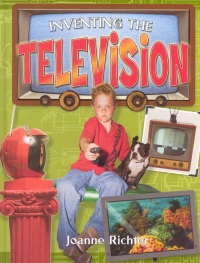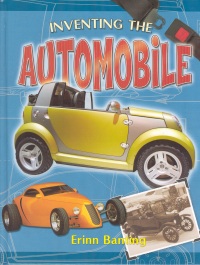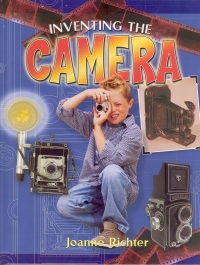| ________________
CM . . .
. Volume XII Number 20 . . . .June 9, 2006
Children who want to be inventors will be engrossed in this series which recalls the development of technologies that are now part of our daily lives. Because the books are chock full of history, explanations, pictures and drawings, children will learn the science and mechanics of the featured inventions, the politics of inventing and the stories of the personalities who pursued their passions persistently, sometimes obsessively. Disputes over patents happened regularly when the first cars were built. Nikolaus Otto is considered the first person to build a four-stroke internal combustion engine, but French engineer Alphonse Beau de Rochas had already patented the idea in 1862 - 14 years before Otto built his engine. In 1886, after more than 30,000 engines had been built based on Otto's model, Otto's right to de Rochas's patent was revoked, or taken back, and Otto was forced to pay de Rochas a percentage of the money he earned from the engines he sold. (From Inventing the Automobile.) Explanations of how these inventions work are complicated, but understandable for those children interested in the logic of how things work. Electronic TVs use cathode-ray tubes, or CRTs, to capture images at the transmitting end and recreate them at the receiving end. The CRT was developed by German scientist Kurt Ferdinand Braun in 1897. When a wire, called a cathode, is heated inside the tube, it sends a cathode ray, or a stream or electrically charged particles called electrons, toward the tube's screen. Devices called anodes focus and accelerate the ray. The screen is coated with phosphor, a material that glows when hit by a cathode ray. The parts of the screen that do not get hit by the ray remain dark. (From Inventing the Television.) The books address issues that these technologies have created, such as environmental concerns about the chemicals used in picture development and spent batteries and the fact that plastic ink cartridges that can take 1,000 years to decompose. Another contemporary issue is the epidemic of obesity that threatens the health of people who are couch potatoes, watching television, movies or playing video games constantly, and never getting adequate exercise. German inventor Paul Nipkow, when he proposed a disk in the 1880s to bounce light through pierced holes and thus create an image, could not have foreseen the dramatic upswing in childhood diabetes a hundred years later, because of his work. A timeline in each book shows the main years in which advances were made in these inventions. A dark purple border with a technological theme outlines each page. Unfortunately, this pattern is repeated monotonously in mauve under the text on every page, sometimes to the detriment of readability. Teachers will be able to make good use of this series in science class. The books will also assist students who are creating projects for science fairs. The “Breakthrough Inventions” series will be a useful addition to classroom and school libraries. Highly Recommended. Harriet Zaidman is a teacher-librarian in Winnipeg, MB.
To comment
on this title or this review, send mail to cm@umanitoba.ca.
Copyright © the Manitoba Library Association. Reproduction for personal
use is permitted only if this copyright notice is maintained. Any
other reproduction is prohibited without permission.
NEXT REVIEW |
TABLE OF CONTENTS FOR THIS ISSUE
- June 9, 2006.
AUTHORS |
TITLES |
MEDIA REVIEWS |
PROFILES |
BACK ISSUES |
SEARCH |
CMARCHIVE |
HOME |



